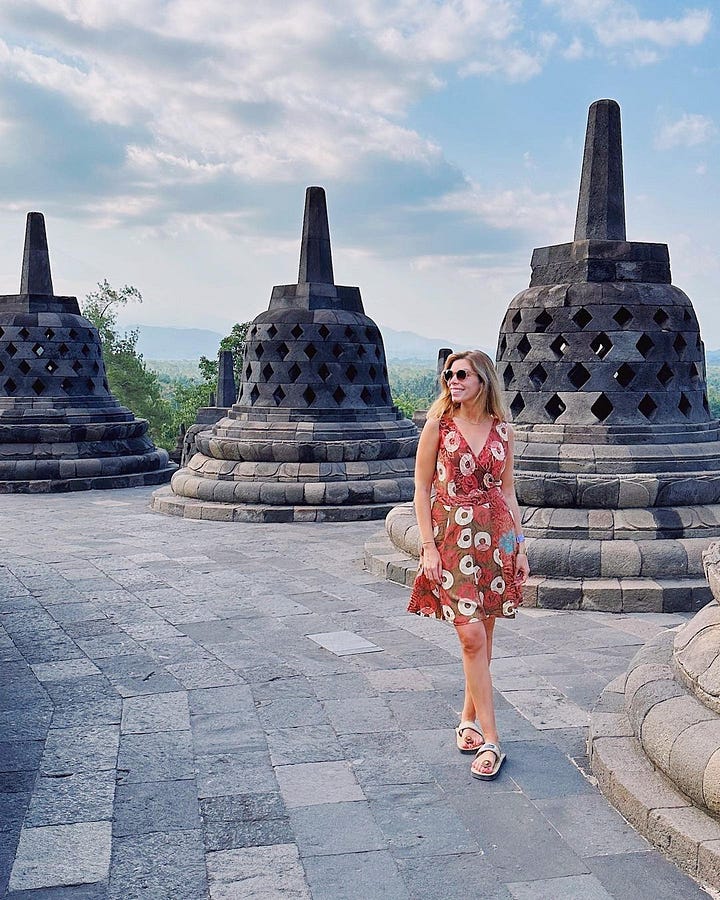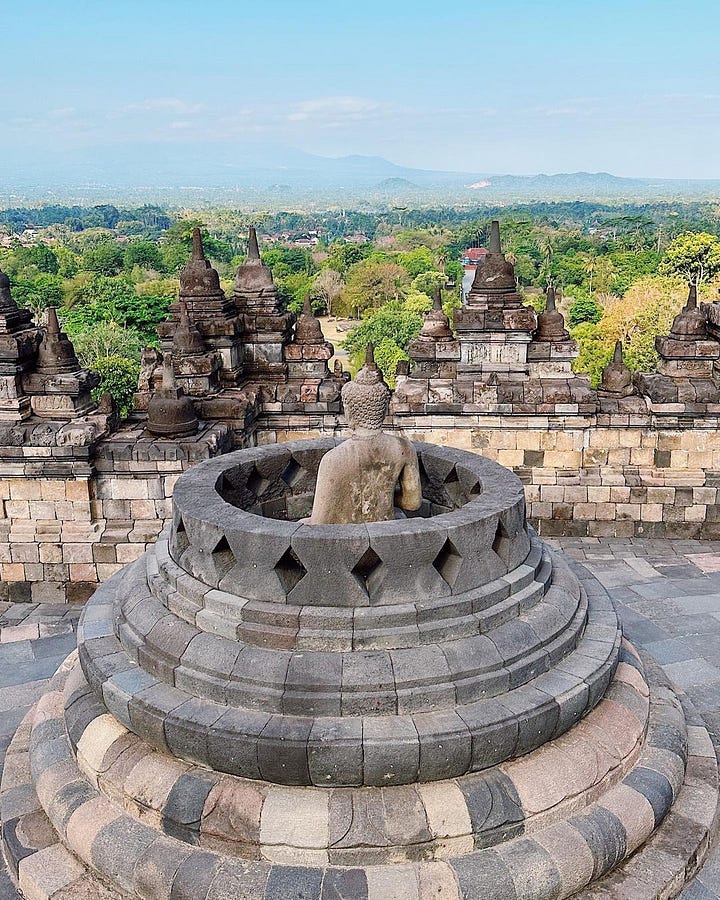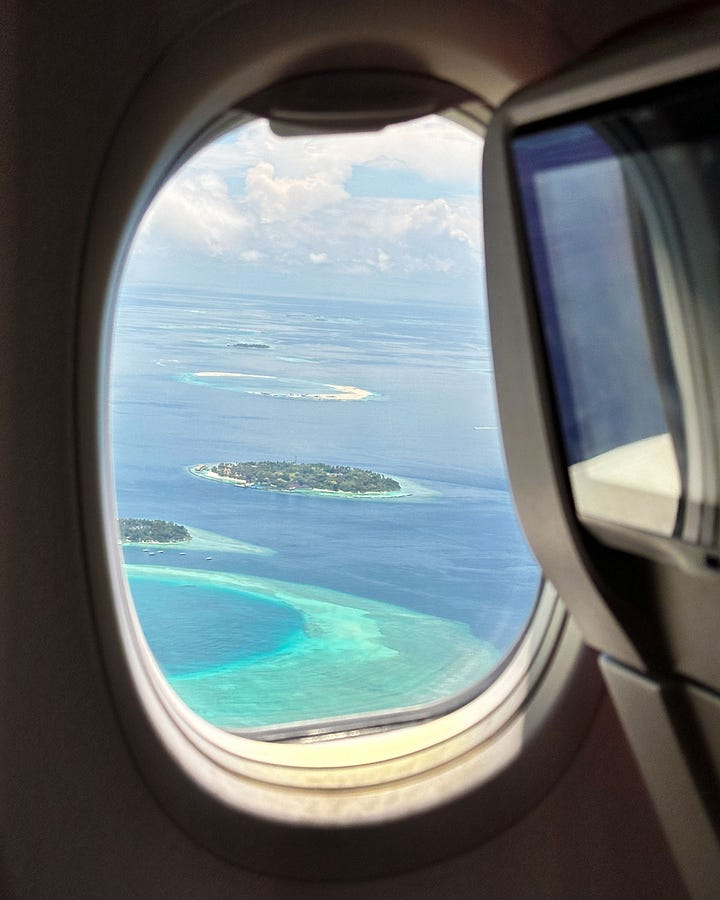How to plan a 3-month trip around the world
The mindset and logistics of leaving it all behind — for a while
Travel has always played a major role in my life. I’ve been on the road or living abroad since birth, and I feel most at home in between places rather than confined to one.
As I’ve gotten older I’ve committed to travel even more — this time on my own terms. Big trips are no longer something I reserve for holidays, work breaks or “once a year”.
Little by little, I’ve designed a life with a flexible schedule and untethered myself from long-term commitments so I can pursue the freedom of living my daily life on the move rather than staying still.


Anyone who has taken a sabbatical before will tell you it requires a lot of work and effort to pause so many elements of your life to create the space for this kind of freedom. You need to rethink your routine, your relationships, your work. You have to decline opportunities. You have to disappoint people.
You have to step away from the comforts of home and choose the unknown, over and over again, with no guarantees. You have to embrace more risk.
At the end of the day, it comes down to identifying your priorities and championing them over all else. “Whatever you are not changing, you are choosing.”
This quote by Steve Jobs is about innovation, but it offers guidance on life more generally:
“People think focus means saying yes to the thing you've got to focus on. But that's not what it means at all. It means saying no to the hundred other good ideas that there are. You have to pick carefully. I'm actually as proud of the things we haven't done as the things I have done.”
Consciously designing your life requires a lot of saying no in order to make room for what you actually want, not what society tells you.
Do I sometimes feel like Sisyphus, eternally pushing a boulder up a mountain in search of an “aha” moment, wondering if I’ll ever make it to the top, wondering when it will stop requiring so much effort? Absolutely. But that’s a post for another day. My journey is my own unique expression and I wouldn’t have it any other way.
I know the secret to life is to live in the present and be grateful for what you have, not to always pursue more. But when you’ve grown up on the road and seen so much, you realize how much infinite potential there is in the world. How many new things there are to learn, people to meet and ways to grow. It’s so hard to sit still when there’s so much life to experience.


I have no doubt I’ll slow down at some point, but not right now. I feel too much urgency. I have always felt this way, but the big push came with the pandemic — a reminder that the world is fragile and that there are no guarantees in life.
And we’ve all seen how quickly destinations are changing under the weight of overtourism (and not least, politically). That magical sense of discovery is fading as we’re overexposed to every place on social media, and local culture is being lost every day.
In the past few years, I’ve made travel my top priority, and I’ve worked to create the time, space and resources to take monthlong trips so I could truly immerse myself in a destination.
I want to witness places as they are now, when I am young and able and untethered, knowing they will be very different in a decade.
Last year, I challenged myself to spend three months on the road. From March to June, I spent 96 days exploring heritage sites, tea plantations and palm-fringed beaches in Sri Lanka; snorkeling in the Maldives; wandering through colonial towns in Malaysia; and island-hopping in Bali, Lombok and Komodo, Indonesia.
Three months of solo travel was both thrilling and daunting. I had never been on the go for that long by myself. I worried about lugging two suitcases around for three months; about getting sick without anyone to help me; about being robbed or feeling unsafe. I worried about being exhausted and stranded far from home and everything that was familiar in my life. And most of all, I worried I wouldn’t enjoy the experience. That I’d dislike the place or regret being there. That I wouldn’t find the feeling I was looking for.
Maybe it was luck or fate or the months of careful planning, but I ended up having an absolutely magical trip. And I wasn’t ready to come home after 3 months. This was a personal mission, not a contest, but I felt like I won the challenge I had set out for myself. And that was thrilling. I gained so much confidence in myself and I have felt a deep sense of inner peace ever since. The peace of knowing I’m living my life as I was meant to. That these experiences are propelling me towards a more purposeful path.
This trip reassured me that I will be rewarded if I trust my instincts. That the greatest adventures happen if we stay open to life and committed to our path. That life can be so joyful.
“Everything you've ever wanted is sitting on the other side of fear.”
As I’m getting ready to leave for my next big trip, I wanted to share some tips for how to plan your own intentional escape around the world.
Slow Travel Tips & Reminders
I spend a lot of time researching and daydreaming about my future destinations, and I prioritize slow travel over speed. I like to design a rough itinerary that leaves room for plenty of wandering and unplanned discoveries. I wish I could say I’m someone who wings their travel, but I like a certain level of comfort. I want to sleep well at night and feel safe. And more importantly, I want to maximize my time exploring the world — because life is short, and the world is vast.
I also spend a lot of time mentally preparing for the journey. I approach these trips as a marathon, not a sprint. And I remind myself that I can do as little or as much as I’d like (one of the perks of solo travel). There is no checklist. The point is to be present and savor the moment. I feel like our instincts are dulled when we’re in a comfortable routine, and getting away from home is a welcome jolt to the system. Travel makes me feel so alive.
Ultimately, I create space where I can be spontaneous because I have my logistical bases covered through some careful planning. Here are some helpful things to keep in mind.
Check the weather. Most European cities are year-round destinations, but many locations in Asia are not. I learned this the hard way when I spent two months in Thailand during the hottest months of the year and nearly fainted from heat exhaustion every time I left the house. Now I plan my trips around ideal weather conditions to make the most of my experience. You can search seasonal weather predictions in Google or check out a website like ResponsibleTravel.com which has a nice “Best Time To Go” feature.
Check the national holidays. Events like Ramadan in the Muslim world, Golden Week in China and Japan, and national festivals anywhere can impact tourism, hotel availability and transportation. A quick search for national holidays in your destination will help you avoid unexpected crowds, closures or exorbitant prices.
Tripadvisor Forums. I always consult my favorite travel blogs and newsletters when I’m planning a trip, but another excellent resource — especially for logistics — is Tripadvisor Forums. These forums have destination experts that are quick to provide itinerary advice and answer the latest FAQs (for free!). I also browse travel Facebook groups and Reddit, but TripAdvisor tends to be the most authoritative. (And if you prefer to consult a travel advisor to save time and energy with planning, let’s talk!).
Flights. I check SkyScanner and FlightConnections.com to map out my routes. I have a premium FlightConnections account and highly recommend it — it shows all direct and indirect flights departing from any airport in the world. At $40/year, it’s invaluable for planning multi-destination trips. Then I use Hopper to set flight alerts.
Google Maps. Once I’ve decided on my destination, my next step is putting together a Google Map. This is the fun part — I save all my Instagram screenshots, blog recommendations, hotels and restaurants here. Seeing everything laid out spatially helps me structure my days efficiently and pick a hotel in a convenient location.
Hotels. While Booking.com has had some well-known issues, it remains my favorite platform for checking accommodation availability. Almost every hotel in the world is on it, and they usually have great cancellation policies up to a week before check-in. Use the filters to refine your search: set your price range, tick 8+ star reviews and always use the map search to check the location. Then, cross-check the hotel reviews on Google before booking — these give a little more insight.
Plan ahead for famous attractions. Purchase tickets for major sites ahead of time (especially when traveling during high season, which you should try to avoid). Many attractions have capped the number of visitors and sell out months in advance, like the Last Supper in Milan, the Alhambra Palace in Granada or the Ghibli Museum in Tokyo.
Check visa requirements. Some countries allow you to purchase visas on arrival, while others require you to apply in advance. Be sure to check the number of days you can stay so you don’t risk overstaying your stay or wasting time with visa runs during your trip.
Earn points. Book all your travel through a premium travel credit card to earn points you can redeem for free flights. I have the Capital One Venture X which gives me Priority Pass lounge access, a $300 annual travel credit (effectively reducing the price of the card to $95/year), 2X points on all purchases, trip cancellation & interruption insurance, 10,000-mile anniversary bonus and more.
Don’t forget travel insurance. If your credit card doesn’t include travel insurance, purchase a separate policy for peace of mind. Everyone has a different risk tolerance, but especially when traveling alone, it’s best to be prepared.
Get your vaccines. When was your last booster? Vaccines like typhoid need to be updated every two years, while tetanus is every ten years. Depending on your destination, it might also be advisable to get the new dengue fever vaccine. Check with your doctor three months before departure — some vaccines require multiple doses to be fully effective.
Medications. Remember to pack enough prescription medications and over-the-counter essentials. Some drugs, like bismuth, are not readily available everywhere (for example, Pepto-Bismol isn’t legal in Italy!). I also pack Vitamin C tablets, rehydration salts, seasickness meds, a thermometer and painkillers, just in case.
Time zone converter. If you work remotely, World Time Buddy is indispensable. I save it in my bookmark bar and use it regularly for scheduling calls across time zones.
Size up your destination. Speaking of maps, an app like “True World Size” helps compare a country’s actual size to your own — without the distortion of traditional maps (for example, Russia is much smaller than it looks, and Africa is much larger). This tool has helped me understand travel distances better: Vietnam, for example, is roughly the same size and shape as Italy.
Download essential apps. A currency converter and translation app are must-haves. I also love TripCoin for tracking expenses and Splitwise for splitting costs if I’m traveling with friends. Uber operates in many countries, but local ride-hailing apps are often better: Grab (Southeast Asia), It Taxi (Italy), Gojek (Indonesia), and Bolt (Tunisia) are just a few examples. If you are heading to China, you’ll need a whole new suite of apps to function.
Buy an eSIM for fast internet. Airalo is the most popular but I find better prices (and unlimited GB plans) with Yesim. Search for country-specific or regional plans and enjoy fast internet from the moment you land.
Bring a second wallet for local cash. A simple, flat zip wallet helps keep track of currency while on the road. Many destinations are still cash-based, and in countries like Egypt or Laos, you’ll handle large stacks of bills. Keeping them in a separate wallet is useful.
Look up common scams. Getting ripped off by taxis at the airport is pretty common, but some destinations have specific scam techniques. Fake guides in Egypt might offer to take your photo and then demand a tip, some tuk tuk drivers in Thailand will tell you an attraction is closed and re-route you to an overpriced shop, etc. Look up common scams in your locations so you’re more prepared.
Don’t forget earplugs. I always bring a small bedside pouch with essentials like an eye mask and earplugs, both of which have saved me countless times from a poor night’s sleep. I love the natural wax earplugs by Calmor which feel like you’re wearing nothing at all.
Check your power adapter. Ending with an easy one. Confirm which plug type your destination uses or invest in a universal adapter!
What would you add to this list?
And if you’ve spent extended time abroad, I’d love to hear your travel stories!!







I love this writing and hear your voice SO clearly in it!! We all can’t wait to see and read about this upcoming trip 💛💛
Love this Livia, a fabulous check list and reflection on travel ❤️